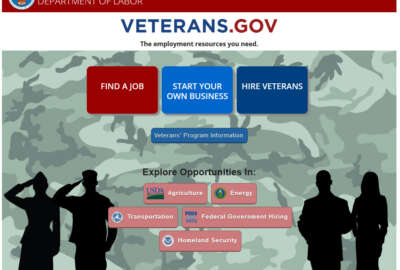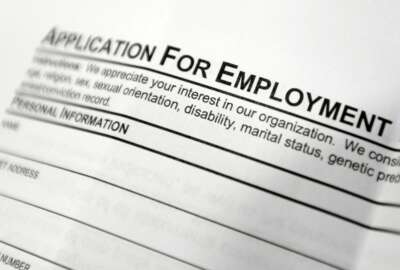
Veterans Employment initiative: What’s working, what’s not, and how to move forward
The Veterans Employment initiative is stalling, and experts say it's time to shift focus away from hiring toward efforts to boost distribution through more diverse...
Experts have declared the Veterans Employment initiative a success in terms of bringing veterans into federal employment. But now the program is stalling, and those experts say it’s time to shift focus away from broad hiring initiatives, and toward more concentrated efforts to boost their distribution through more diverse agencies, and increase retention and engagement.
That’s why the Office of Personnel Management reached out to the Institute for Veterans and Military Families at Syracuse University about a year and a half ago to do a study and make some recommendations on how to move forward.
“If you look at the numbers and the federal government as a whole, it’s done phenomenally well in terms of bringing veterans into federal sector jobs from the launch of the initiative in 2009 all the way up through the latest data we had run, for FY 2015,” said Nick Armstrong, the Institute’s senior director for research and evaluation.
Since the program’s launch, veterans have accounted for more than 30 percent of new hires in the federal workforce, and their numbers have risen until they now make up roughly one-third of federal employees.
But Armstrong said when you dig into those numbers more deeply, you begin to see variations, and places where the program could benefit from more targeted efforts. For example, researchers found that veterans were mostly concentrated in larger agencies, especially those with a military-related culture or mission, like the departments of Defense, Veterans Affairs and Homeland Security.
“That’s what we wanted to try to get into, was how does this vary across the federal government?” Armstrong said. “What had been done in some agencies, and what more could be done going forward?”
It’s easy to assume that the nature of the mission attracted so many veterans to these agencies, but Armstrong said it’s actually more complicated than that. First, larger agencies with better staffed and funded HR departments were able to set up veteran employment resource offices completely devoted to that mission. Other, smaller agencies only had veteran employment resource officers who sometimes wore multiple hats, forced to divide their attention between multiple hiring initiatives.
There can also be cultural differences inhibiting agencies from understanding vets’ skills. While DoD, VA and DHS might align more closely with tasks a veteran performed in the military, and may draw on a veteran’s experience in that realm, that doesn’t necessarily mean that’s what a veteran wants to do after their military service. And it certainly doesn’t mean that’s all they’re capable of doing.
“It’s a little bit more nuanced than just trying to plug-and-play or trying to automatically assume that what a service member did in the military is what they want to do or what they can only do in the civilian sector. Part of that is about not necessarily full awareness or appreciation of the full diversity of different skills and occupations that military members fill across the military,” Armstrong said.
For example, the GI Bill is a major enticement to many service members to join the military. But focus on veteran status and the nature of their military service can obscure other training acquired during or after that service, like higher education through the GI Bill. And that’s a problem when, as Armstrong said, about half of vets don’t want to do the same job they did during their military service.
But that lack of visibility when it comes to federal jobs veterans can perform can go both ways. Veterans aren’t always aware of the existence of smaller agencies whose missions don’t align more closely to the military, much less their hiring status.
OPM has already made moves to rectify that situation. It created FedsHireVets.gov to act as a resource to connect veterans to the full range of federal jobs. But veterans remain concentrated in certain agencies.
“There’s clearly more opportunity for agencies to be able to communicate the types of opportunities that vets may, or transitioning service members even may find interesting,” Armstrong said. “And also opportunities to help educate and inform transitioning service members about what those opportunities are beyond the traditional federal agencies where vets tend to find themselves.”
Armstrong said agencies with lower number of veterans and jobs that don’t align with military skills or experience could also look into workforce development or training programs to entice veterans to expand their professional skillsets.
As the study continues Armstrong said he wants to look beyond hiring and basic retention metrics and start looking at the veteran experience in the federal workforce more holistically.
“This is an opportunity to look into the initiative and to pick out things of what can be done now to sustain the success and move the initiative forward, particularly on issues beyond just hiring,” he said.
Copyright © 2025 Federal News Network. All rights reserved. This website is not intended for users located within the European Economic Area.
Daisy Thornton is Federal News Network’s digital managing editor. In addition to her editing responsibilities, she covers federal management, workforce and technology issues. She is also the commentary editor; email her your letters to the editor and pitches for contributed bylines.
Follow @dthorntonWFED
Related Stories




